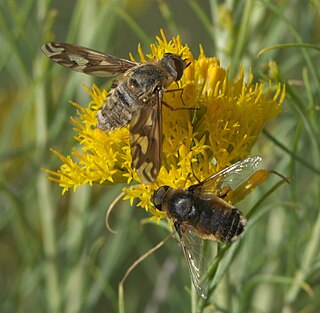
Poecilanthrax willistoni, Williston's bee fly or sand dune bee fly, is a member of the Bombyliidae insect family. This family includes the bee flies, true flies that have developed Batesian mimicry characteristics to avoid predators. That is, they look like bees because that helps them avoid bee-wary predators, but they lack stingers.

The cactus mouse or cactus deermouse is a species of rodent in the family Cricetidae. It is a species of the genus Peromyscus, a closely related group of New World mice often called "deermice". They are native to desert areas of western North America.

The cactus mouse or cactus deermouse is a species of rodent in the family Cricetidae. It is a species of the genus Peromyscus, a closely related group of New World mice often called "deermice". They are native to desert areas of western North America.

The Northern Baja deer mouse is a species of deer mouse native to Southern California and the Baja California peninsula as well as several islands in the Gulf of California. P. fraterculus was previously considered a subspecies of the cactus mouse prior to a 2000 study which identified genetic differences and suggested P. fraterculus is more closely related to Eva's desert mouse than to P. eremicus.

Anthracinae is a subfamily of bee flies in the family Bombyliidae. There are more than 80 genera and 2,000 described species in Anthracinae.

Limnichidae, commonly called minute marsh-loving beetles, is a family of beetles belonging to Byrrhoidea. There are at least 30 genera and 350 described species in Limnichidae. They are found worldwide, with the greatest diversity in tropical regions. Most species seem to be associated with water-adjacent habitats, such as riparian and coastal locations, though many species are likely fully terrestrial, with some species being associated with leaf litter and arboreal habitats. Species with known diets feed on moss or algae. The oldest fossils of the family are known from mid-Cretaceous Burmese amber from Myanmar.
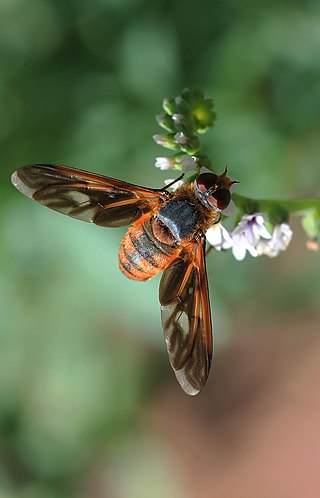
Poecilanthrax effrenus is a species of bee fly in the family Bombyliidae.
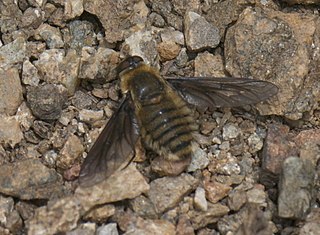
Poecilanthrax monticola is a species of bee fly in the family Bombyliidae. It is found in North America, from British Columbia and Alberta south to Nebraska, Utah, and Colorado.
Poecilanthrax hyalinipennis is a species of bee fly in the family Bombyliidae.
Poecilanthrax alpha is a species of bee fly. It is widespread in the United States, extending north into Canada.

Poecilanthrax lucifer is a species of bee fly in the family Bombyliidae.
Poecilanthrax litoralis is a species of bee fly in the family Bombyliidae.
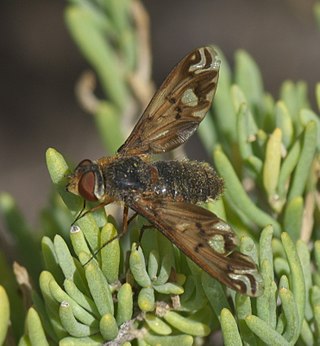
Poecilanthrax alcyon is a species of bee fly. It is widespread in Canada and the United States, extending south to Mexico.
Lepidanthrax eremicus is a species of bee flies in the family Bombyliidae.

Poecilanthrax apache is a species of bee fly.
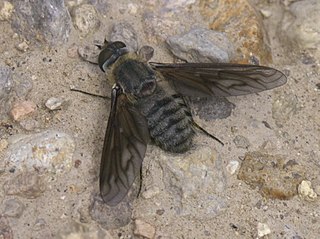
Poecilanthrax californicus is a species of bee fly in the family Bombyliidae.
Poecilanthrax tegminipennis is a species of bee fly. It is widespread in Canada and the United States.

Poecilanthrax arethusa is a species of bee fly in the family Bombyliidae, found in Central and North America.
Poecilanthrax ingens is a species of bee fly in the family Bombyliidae.
Poecilanthrax varius is a species of bee fly in the family Bombyliidae.












